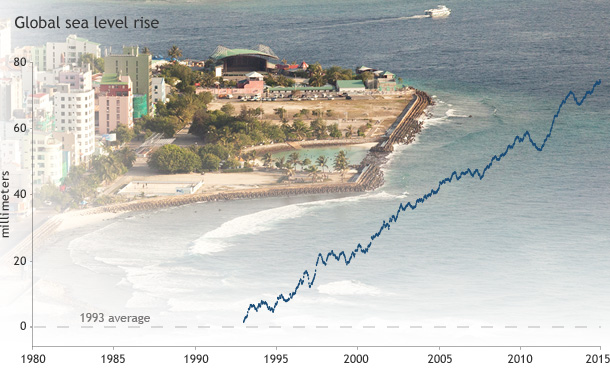Last year was the warmest year on record, according to a newly released international report.

In 2014, the most essential indicators of Earth’s changing climate continued to reflect trends of a warming planet, with several markers such as rising land and ocean temperature, sea levels and greenhouse gases setting new records. These findings and others can be found in the State of the Climate in 2014 report released online today by the American Meteorological Society.
Supporter Spotlight
The annual report compiled by the National Oceanic and Atmospheric Administration’s Center for Weather and Climate at the National Centers for Environmental Information is based on contributions from 413 scientists from 58 countries around the world. It provides a detailed update on global climate indicators, notable weather events and other data collected by environmental-monitoring stations and instruments on land, water, ice and in space.
“This report represents data from around the globe, from hundreds of scientists and gives us a picture of what happened in 2014. The variety of indicators shows us how our climate is changing, not just in temperature but from the depths of the oceans to the outer atmosphere,” said Thomas R. Karl, director of NOAA’s National Centers for Environmental Information.
The report’s climate indicators show patterns, changes and trends of the global climate system. Indicators include various types of greenhouse gases; temperatures throughout the atmosphere, ocean, and land; cloud cover; sea level; ocean salinity; sea ice extent; and snow cover. The indicators often reflect many thousands of independently collected measurements.
According to the report, major greenhouse gas concentrations, including carbon dioxide, methane and nitrous oxide, continued to rise during 2014, once again reaching historic high values. Atmospheric CO2 concentrations increased by 1.9 parts per million in 2014, reaching a global average of 397.2 ppm for the year. This compares with a global average of 354.0 in 1990 when this report was first published 25 years ago.

Temperature measurements showed that 2014 was the warmest year on record. The warmth was widespread across land areas. Europe experienced its warmest year on record, with more than 20 countries exceeding their previous records. Africa had above-average temperatures across most of the continent throughout 2014, Australia saw its third warmest year on record, Mexico had its warmest year on record, and Argentina and Uruguay each had their second warmest year on record. Eastern North America was the only major region to experience below-average annual temperatures.
Supporter Spotlight
Sea surface temperatures hit record highs as did global upper ocean heat content measurements, reflecting the continuing accumulation of thermal energy in the upper layer of the oceans. Oceans absorb more than 90 percent of Earth’s excess heat from greenhouse gases.
The global average sea level also rose to a record high in 2014, keeping pace with trends in sea level rise observed during the past two decades.
Read the full report.








